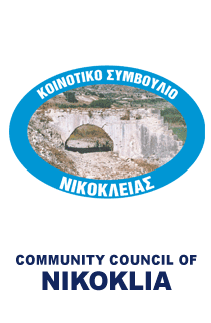Olive cultivation is one of the main professions for the inhabitants of Nikoklia, and the village is filled with olive trees. There are some age-long olive trees in Nikoklia, possibly the only ones in Paphos. Olive cultivation includes two stages, the preparation of the ground and the harvesting of the olives.
Cultivators initially prepare the soil; explicitly, they kill all germs and enhance it with nutritional ingredients.
At the beginning of spring or during harvesting, the inhabitants of Nikoklia trim the olive trees so as to maintain them and raise the production.
Correct irrigation is very important for the productivity of olive trees. Olive trees must not be watered often, except during spring months, when irrigation is considered of vital importance for fructification.
Harvesting takes place from the end of October until the end of February. The villagers are out in the fields harvesting the olives, also known as “louvima”. They used long sticks, known as “vakla” to hit the trees and throw the olives on the ground.
It is worth mentioning that the peasants use the method of engrafting in order to multiply their olive trees. This means that they adjust a branch taken from an olive tree to another olive tree of different type. This method is quite old. Of course the olive trees do not immediately bear olives, but three years after it was planted.
Concluding, continuous care in combination with the proper climate and soil morphology help olive cultivation in Nikoklia.
Sources:
Ionas Ioannis, Traditional Professions in Cyprus, Nicosia, 2001, p.487-497
Great Cypriot Encyclopedia, vol.2 and 5
|
